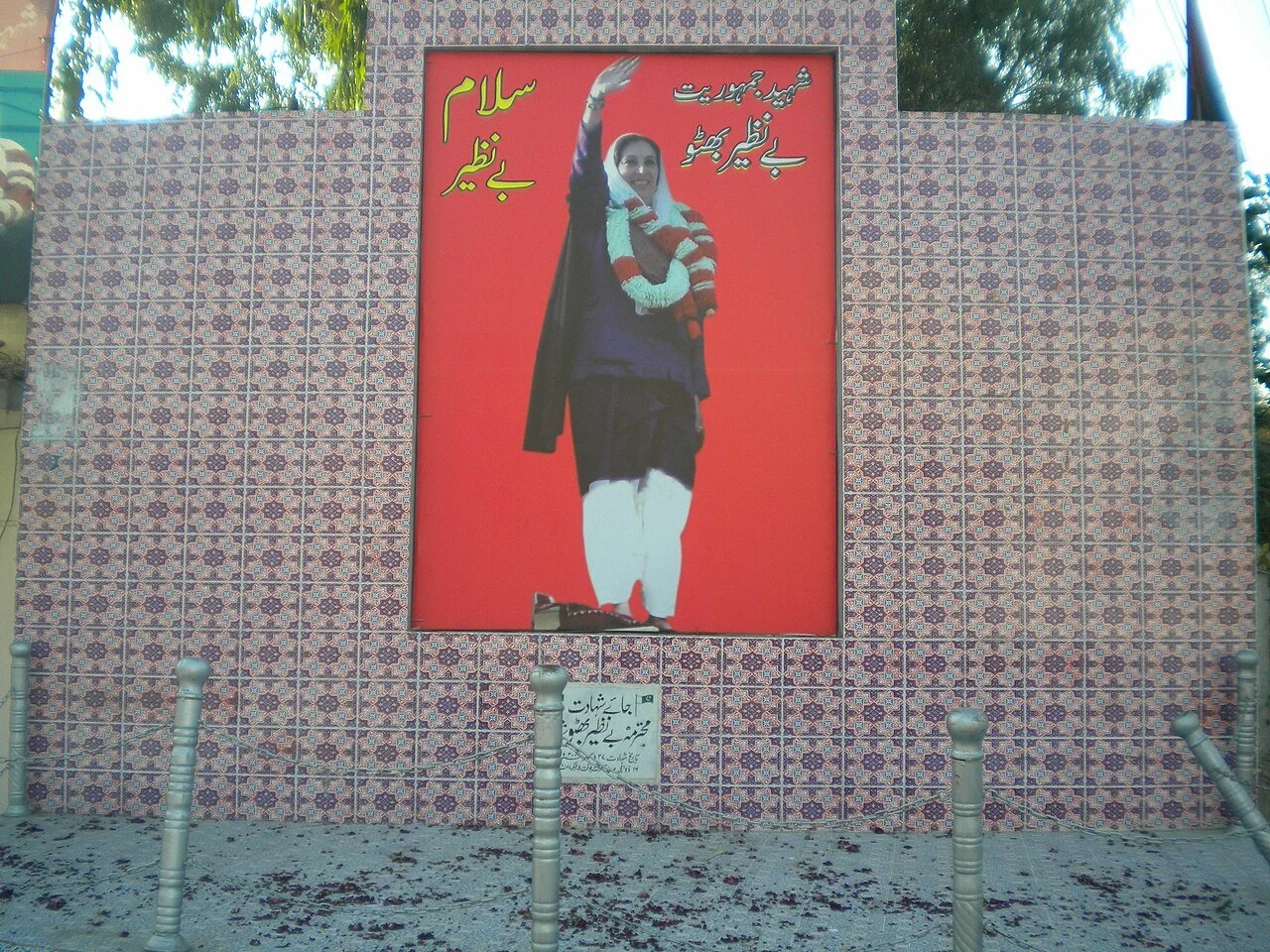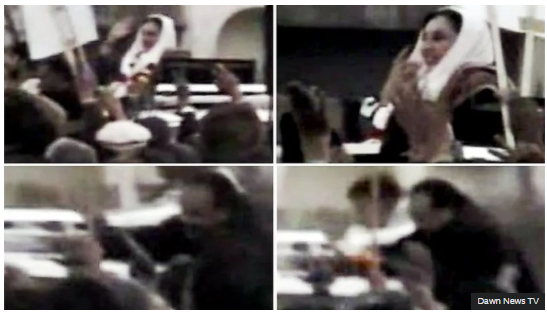The World
Africa & the Middle East
Nearly 2 years to its start Israel and Hamas sign a ceasefire deal, led by U.S. and flanked by Turkey, Egypt, and Qatar.
El Fasher a city in Darfur of western Sudan has been sacked by the RSF, and has become a humanitarian crisis.
Madagascar President flees on French military plane, as Gen Z demonstrations and CAPSAT soldiers force a coup.
300 kids, 12 teachers abducted from St. Mary’s School in western Nigeria, yet no group has claimed responsibility.
North America
South America
Chilean Presidential election sees leftist Jeanette Jara overcome the right-wing competition.
Argentina re-elects Milei letting the world watch his austerity and deregulation reform play out (with U.S. support).
Brazilian courts sentence ex-President Jair Bolsonaro to 27 years in prison for an attempt coup after losing in 2022.
Bolivia’s new President Rodrigo Paz will scrap wealth tax, cut government spending, and has engaged with the U.S.
Asia
The first female PM of Japan, Sanae Takaichi, leads her LDP party right and holds hawkish policies on China.
Europe
NATO tests ‘Eastern Flank Deterrence Line’ as the EU prepares for mounting attacks from and against Russia.
वज्र
The Thunderbolt Diamond
Toronto, Canada (November 24th, 2025)
The Vajra (in Tibet; the Dorje) is a ritualistic tool symbolizing the power of the Gods.
Translated from Sanskrit, Vajra is an instrument built from a ‘Diamond’, indestructible, and houses the power of the ‘Thunderbolt’, an irresistible force. Recognized by Buddhist, Hindus, and Jain societies as both a weapon and a symbol of strength. Depending on the deity holding the tool, its use can be leveraged for peace, when the ends are closed, or to enact the wrath of the gods, when ends are open.
In the Rigveda, part 4 of the Vedas, the sage Dadhichi (दधीचि) sacrificed themselves and their bones to be crafted into a Varja, and gifted to the deity Indra (इन्द्र). Upon which the god of weather utilizes the tool to strike down the evil Vritra (वृत्र) the serpent of drought and then released the waters to the people, and finally goes on to destroy Namuchi (नमुचि).
The Vajra “consists of a spherical central section, with two symmetrical sets of five prongs, which arc out from lotus blooms on either side of the sphere and come to a point at two points equidistant from the centre, thus giving it the appearance of a "diamond sceptre", which is how the term is sometimes translated.”
Many Vajrayana Buddhists, and the devoted, will carry a replica metal Varja in their right hand, symbolizing compassion, paired with a Bell in their left hand, symbolizing receptivity. The meditation is performed best with mudras (hand gestures) to anchor intention. The practice can utilize one of a variety of replica Varja’s ranging from single to nine pronged totems, curved, and double, each with its own significance in prayer.
Beyond mythology and spiritualism, conspiracists read the stories and description of the Vajra as representative of real world technology of the ancient people of the Indus Valley. Through the use of sacred geometry, the ancients developed a tool that could harness plasmoids and magnetic energy to legitimately wield thunder at will.
The power of the Vajra arises in Chinese mythology when Huang T’ien Hua from the Chin Kang utilize the shared tech to blind opponents, ultimately breaking the jade ring of the giant Mo-il Ch’ing, and then killing the eldest of the Diamond Kings. The Greeks depict Zeus with a three-pronged sceptre, the Sumerian’s describe Marduk in the Enuma Elish with a three-pronged sceptre to cut down the life of the serpent Tiamet.
Myths, Legends, fire-told stories connect us with our ancestors, both in disbelief and in faith, there’s a connection. We recognize our own humanity and frailty, yet at the same time inspired to grow into something larger than ourselves. Whether it is an inspirational goal or history of a lost regency, the Vajra is (will be) the tool best defined in the hands of those who hold it.
The
Nepalese
Royal Massacre
Toronto, Canada (October 15th, 2025)
June 1st, 2001, the Narayanhiti Royal Palace in Kathmandu, Nepal was attacked. The Nepali Monarchy was destroyed. The Royal family and key lines of succession were murdered, King Birendra, Queen Aishwarya, Prince Nirajan, Rabi Shumshere, Kumar Mahesh, Kumar Khadga, Kumar Gorakh, Rajiv Shahi, Princess Dilasha, Princes Sitashma, with many staff injured.
The Attack
International outreach rose and even Scotland Yard offered to provide investigative forensic analysis to determine how the event played out. Instead, Nepal retained a two-man committee, Chief Justice Keshav Prasad Upadhyay and the Speaker of the House of Representatives Taranath Ranabhat. Their results determined a drug fueled Crown Prince Dipendra shot his family and ultimately shot himself in the head, later to die in a coma.
Early that evening Prince Dipendra was asked to leave the party, where he then called his girlfriend, Devyani Rana. Motivated by his parents disliking of his girlfriend, of lower caste and political status, and being advised he’d be passed over for King, Dipendra grabbed a M16 assault rifle and "A drunken crown prince indiscriminately fired, killing the royals".
The Reaction
King Birendra had ruled since 1972 and was well respected. In the 1990’s, he accepted the People’s Movement to limit his families Monarchical power and granted constitutional reforms for greater democracy. As the country mourned their loss, the unpopular Prince Gyanendra Bir Bikram Shah was crowned the new King of Nepal, which did raise suspicions from many as he was unusually absent on the night of the attacks. As Prince Dipendra was very well-respected by the Nepalese population, Gyanendra would never have been crowned King otherwise.
Other anomalies stood out, in that Gyanendra’s family, Komal, Paras and Prerana were spared during the massacre, although his son was injured and his wife was reported to have recovered from a life-threatening bullet wound. Also, witnesses claim to have seen multiple people wearing masks of Prince Dipendra, accounting for multiple bodies appearing throughout the Palace despite the attack occurring in the Billiard room. Another concern is that the right-handed Prince Dipendra’s self-inflicted head wound was at his left temple.
Finally, after the event, curfews were imposed some suspect the Nepalese army used time to clean up and dispose of over 900 bodies that were poisoned. Within days the Royal Family was promptly cremated there were no opportunities to complete comprehensive autopsy.
Fast forward
Following the Royal Families death, a series of changes impacted the political structure of Nepal. In 2006, the Maoist party succeeded in ending the Hindu Kingdom fully replacing the structure as a Federal Republic (with questionable backing by Indian Research and Analysis Wing and the American Central Intelligence Agency). In 2015, the Federal Democratic republic divided into seven provinces. And this year, in 2025, pro-monarchy protests took root to restore the Kingdom of Nepal with the last King Gyanendra as the head. Soon after, Prime Minister KP Sharma Oli has fled the country due to Gen-Z protests, and the country is currently under control of the Nepali army, until a new PM is selected.
The Assassination of Benazir Bhutto
Montreal, Canada (November, 9th, 2025)
The first democratically elected Prime Minister in Pakistan, Zulfikar Ali Bhutto was later hanged by the Pakistan military regime. Years later his daughter, Benazir Bhutto, successfully became the first woman to lead a Muslim country as Prime Minister (1988-1990) and again in (1993-1996). She ran on similar policies to her father; to take on corruption and she was a fierce opponent of Islamic Extremism throughout the country. She had threatened Al-Qaeda, the Taliban, local Jihadist groups, and was distrusted by the Pakistani military. Just as her father died in sacrifice to his politics, Benazir’s life was taken on December 27, 2007, by a 15-year-old suicide bomber Bilal in Rawalpindi, Pakistan.
“The court also acquitted five men who had been accused of being Taliban fighters involved in the conspiracy to murder Bhutto, However, it found two police officers guilty of “mishandling the crime scene”, each sentenced to 17 years imprisonment and fined 500,000 rupees ($4,700)” Al Jazeera New Agencies.
Pakistani State – The Pervez Musharraf government immediately blamed the assassination on Taliban Chief Baitullah Mehsud, who was later killed a drone attack in 2009. The Pakistani anti-terrorism courts, however, accused Musharraf himself in 2013, and he faced a travel ban up to 2016. As soon as he could he fled to Dubai.
United Nations – a 3-member UN team drafted a 70-page report in 2010 criticizing the Musharraf’s governments limits to providing Bhutto proper security detail. The response of Police officer Khurram Shahzad who hosed down the scene 2 hours after the attack drew attention, and Rawalpindi Police Chief Saud Aziz refused an autopsy of her body, both were convicted for conspiracy – but named no other conspirators.
Conspiracy Theorists – As the Pakistan People’s Party (PPP) came to power after her death, Bhutto’s widow Asif Ali Zardari was elected president. As Zardari’s senior aide Bilal Sheikh oversaw Bhutto’s security when she returned from exile questions arose about his involvement in her death. Sheikh was killed by a suicide bomber in 2013. Video footage of Bhutto’s trusted bodyguard Khalid Shahensha rose suspicions about his behaviour and gestures on the day of the assassination. Shahensha was gunned down in Karachi in 2008.





























